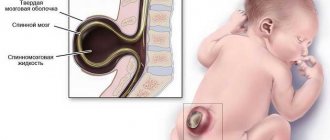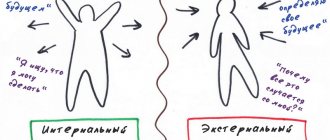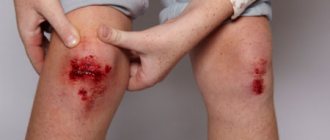Category: Infectious
Among infectious diseases, the most dangerous for humans is rabies.
The disease is an acute contact zoonosis with prolonged incubation. It manifests itself as rapid damage to the central nervous system and the development of progressive, severe encephalitis with high mortality in patients.
- The causative agent of the disease is a virus of the genus Lyssavirus, which belongs to the large family of rhabdoviruses containing a single-stranded RNA molecule.
There are two variants of the virus - wild (or street), circulating in the natural environment, highly pathogenic for animals and mammals, and fixed - a non-pathogenic strain used to make vaccines.
Virions of the virus are quite sensitive; at high temperatures (above 60 degrees) they quickly die. They do not tolerate the effects of standard disinfectants, but at the same time, they are resistant to one-time frosts, known chemotherapeutic drugs and antibiotics.
The infection enters the human body through a bite, when the saliva of an infected animal comes into contact with the human mucosa, or through wounds on the skin, penetrating into muscle tissue. This is where the active phase of their reproduction and intensive movement along the nerve fibers to the brain begins. Having reached the final goal, the process of tissue destruction begins.
Transmission of infection by aerosol, through clothes or household items is impossible. But if there was a bite from an animal that showed atypical aggression, with signs of foaming at the mouth, you should urgently seek medical help. By the way, infection in animals, during the latent period, can be asymptomatic for a long time.
This poses a particular danger to humans; symptoms of rabies in cats, for example, in the initial period may manifest themselves as difficulty swallowing food and increased fear of hydrophobia, while the animal is in an absolutely calm state, which should be paid close attention to.
Etiology and routes of transmission of rabies
The virus that causes rabies is highly pathogenic for warm-blooded birds and animals. The virus circulating in nature maintains its vital activity by spreading among the population of animals and birds. Despite this, the sources of infection in the vast majority of cases are dogs, both domestic and stray, which in one way or another become infected from wild animals. The share of wild animals as sources of infection is about 25-28% of all rabies cases. In ten percent of cases, infection occurs from cats.
The rabies virus is found in the saliva of an infected animal. A person becomes infected when salivated and bitten by an animal with rabies. Bites on the hands and head, as well as multiple bites, are considered especially dangerous in terms of infection. The disease is characterized by seasonality, occurring in spring and summer. A sick person, as a source of infection, theoretically poses a danger during the development of the clinical picture, when he does not control his actions.
According to Rosselkhoznadzor, in the first six months of 2012 alone, 950 cases of rabies were recorded in Russia, mainly in the Central Federal District - 52%, Volga - 17%, Ural - 8%, Southern Federal District - 7%, Siberian - 7%. Foxes are considered the main spreaders of rabies; in Russia there are up to 10 foxes for every 10 km2, and in order for the disease not to develop rapidly there should be no more than 1 fox per 10 km2.
In recent years, the number of wolves and raccoon dogs in Russia has increased, which, along with foxes, can also actively spread the virus. Moreover, animals such as lynxes, hedgehogs, bears and moose, for which this is not typical, also began to get sick. Cases of attacks on humans by rabid crows are increasing.
It is very important to vaccinate your pets on time. There are cases when domestic dogs, unvaccinated against rabies, go with their owners into nature, to the country, attack hedgehogs or return from the forest in blood and disheveled, and then, after some time, begin to react inadequately to affection and avoid light, hide in dark places. places and soon die.
Previously, after a bite from a domestic dog, before carrying out prophylaxis, the animal was observed for 10 days; if the dog did not die, then no drugs were prescribed (see symptoms of rabies in a dog). Today, if the situation with rabies is severe and a safe vaccine is available, it is recommended to immediately seek medical help after a bite and carry out vaccine prevention.
Treatment
Rabies in cats, wild animals and humans has no cure. Those suspected of being infected with the virus should be isolated. Pets must be euthanized and corpses must be burned.
If a rabid cat has bitten or scratched the owner, he should wash the skin and wound with water and an alkaline solution (for example, laundry soap), and go to the hospital as soon as possible. Next, the patient is prescribed a course of injections and antibiotics. A sick cat cannot be saved in the same way.
Structure of patients with clinical manifestations of rabies
As was written earlier, the fight against rabies in the event of a bite or salivation by an infected animal comes down to vaccinating the patient. Therefore, today patients admitted with an obvious clinical picture of rabies are rare. The incidence of rabies is associated with three main reasons:
- Late seeking medical help after a bite;
- Violations of the regime during the period of vaccination against rabies;
- Incomplete vaccination.
Unfortunately, for many people, elementary illiteracy and carelessness in relation to their health becomes fatal. By perceiving an animal bite as a banal scratch, a person puts his life at risk. Rabies is exactly the case when it is better to play it safe and immediately consult a doctor in case of an animal bite or even salivation.
What happens to the human body after infection with rabies? The virus travels along nerve pathways to the brain and spinal cord and causes the death of nerve cells. Gradually, the destruction of the nervous system causes certain symptoms and ultimately leads to the death of the patient.
Violent form
Rabies virus is called rabies precisely because of the violent behavior of the infected subject. All stages of infection development relate to a greater extent to this form of the disease.
In cats it passes quickly, lasting from 3 to 11 days.
In addition to the described signs, it is worth adding the following:
- at the first stage of infection, the animal becomes lethargic and does not respond to commands;
- then the cat shows restlessness and irritability;
- reacts sharply to sounds;
looks around nervously;- scratches and bites for no reason;
- towards the end of the prodromal stage, digestive disorders are observed - diarrhea and vomiting last for 2 days.
The stage of manic excitement is characterized by profuse drooling. The sticky liquid can be seen not only on the face, but also on the neck and other areas of the coat.
Signs of rabies in humans
After the virus enters the human body, a latent or incubation period begins, lasting 1-3 months. In rare cases, it is possible to shorten this period to 10-12 days and lengthen it up to one year. The duration of incubation is influenced by the location of the bite - the longer the path to the brain, the longer the latent period lasts. There have been cases when a person fell ill 4 years after being bitten by a mad cow.
After the incubation period, true disease occurs. There are three stages of rabies, which replace each other: I - initial, II - excitement, III - paralysis. So, what symptoms of rabies do a person experience after being bitten by an infected animal?
Initial stage of rabies (1-3 days)
- The very first symptoms of rabies in humans occur at the site of the bite. By this time, the wound may have healed completely, but the person begins to “feel” the bite. A nagging pain is felt with the greatest manifestation in the center of the bite, burning and itching, and increased sensitivity of the skin. The scar may become inflamed and swollen again.
- Low-grade fever occurs - the temperature fluctuates between 37 C -37.3 C, but does not exceed them.
- There is weakness, headaches, vomiting and diarrhea.
- If the bite is on the face area, the person begins to be bothered by visual and olfactory hallucinations - obsessive smells that are not actually there, visual non-existent pictures.
- Typical mental disorders are noted: the patient is overcome by causeless fear, melancholy, and depression. In rare cases, anxiety gives way to irritability. The person becomes withdrawn and apathetic to current events.
- Sleep and appetite are disturbed. In rare moments of sleep, the patient is overcome by terrible dreams.
Excitement stage (2-3 days)
- This stage is characterized by high reflex excitability with a predominance of the tone of the autonomic nervous system.
- One of the striking symptoms is hydrophobia or fear of water. When the patient tries to take a sip, a spastic spasm of the swallowing muscles and respiratory muscles occurs, leading to vomiting. This symptom is characterized by progression - in the future, even the sound of pouring water and its appearance causes a spasm of the larynx and pharynx.
- The nature of breathing changes - it becomes short and convulsive.
- External stimuli aggravate the reaction of the nervous system. Convulsions occur that distort the person’s face.
- A seizure can be triggered by air movement, sharp sound and bright light. As a result of these manifestations, the patient experiences fear of previously familiar stimuli.
- Objectively, dilated pupils and exophthalmos with a fixed gaze at one point are observed. The pulse accelerates sharply. The patient sweats profusely and suffers from profuse, incessant drooling.
- Mental disorders continue to progress. During an attack, severe psychomotor agitation is noted. The patient becomes violent and dangerous both to himself and to others and commits aggressive and violent actions (hence the name of the disease). Patients rush at others, can hit and even bite, and can cause damage to themselves - tearing hair, clothing, hitting walls and the floor. During an attack, a person is overcome by terrifying auditory and visual hallucinations. At the peak of the attack, respiratory and cardiac arrest may occur.
- During the period between attacks, the person becomes adequate, answers questions correctly and does not show signs of aggression.
Paralysis stage (12-24 hours)
Paralysis occurs due to loss of functions of the cerebral cortex. Certain groups of muscles and organs (tongue, larynx, etc.) are subject to paralysis. Motor and sensory functions fade away, seizures and phobias stop. The patient outwardly calms down.
There is a significant increase in temperature to 40-42 C. A rapid heartbeat occurs against the background of a drop in pressure. The death of the patient occurs due to paralysis of the heart or respiratory center.
Thus, the total duration of clinical manifestations is 3-7 days. In some cases, the above-described stages and symptoms of rabies in humans can be erased, and the disease very quickly progresses to paralysis (death occurs within the first day after the first manifestations).
Diagnostics
The main diagnostic signs of the disease are the exacerbation of its symptoms: feelings of fear, anxiety, hydrophobia, aerophobia, hypersalivation. To isolate the virus and determine rabies, viroscopy, biological and serological methods are used. When testing for rabies, blood, saliva, material from brain tissue, and salivary glands are examined. Using sections, a cluster of Babes-Negri bodies is detected. Diagnosis of rabies is also possible using ELISA.
A lifetime test for rabies in humans includes:
- detection of the virus using RIF in a corneal imprint;
- test for isolation of the pathogen from saliva;
- detection of antibodies using RIF, ELISA, PCR (blood test is performed).
The disease must be differentiated from tetanus, lysophobia, botulism, delirium, and ecephalitis.
Algorithm of action in case of suspected infection
The test may be negative, but this does not exclude the suspicion of infection.
Therefore, the pet needs to be additionally checked:
- The cat is sent to quarantine, completely isolated from contact with other animals and people. Typically, quarantine lasts 10-14 days, but can last for a month, during which clinical symptoms appear.
At the slightest suspicion of rabies, the veterinary service sends a notification to the State Station for the Control of Animal Diseases (SABD). They, in turn, take the necessary measures to organize quarantine in the source of infection.
All people who were in contact with the sick cat are temporarily isolated and examined, and subjected to disinfection procedures.
Prevention
Even without leaving the house, a cat can become infected with rabies from another pet, for example, from a dog that is constantly walked.
Therefore, the only way to protect your four-legged pet from infection is timely vaccination.
Cats are vaccinated starting from 3 months of age, the procedure is repeated every year.
After vaccination, the pet is isolated for 2 weeks from contact with other pets and is not allowed outside. This is necessary for the development of immunity.
Nursing and pregnant cats are not vaccinated. Therefore, they require the most careful care.
If for some reason the pet has not been vaccinated in a timely manner, it should not be allowed to visit attics where bats live, or basements where a cat can catch and eat a sick rodent.











